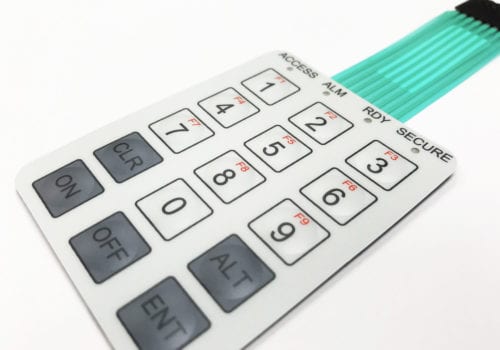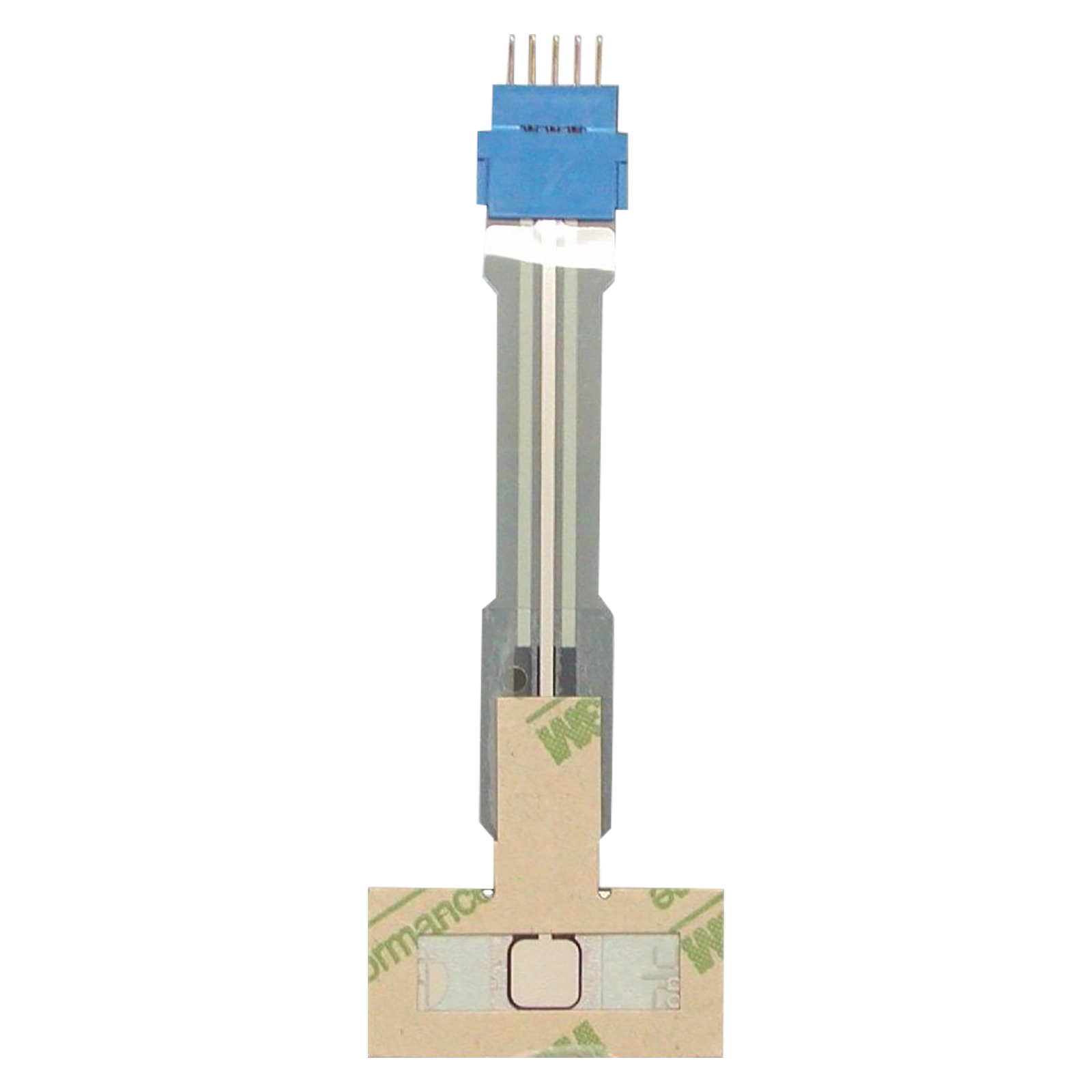Membrane Change Innovation: The Trick to Reliable and Affordable Interfaces
Membrane button modern technology has become a critical component in the style of interface, offering both integrity and cost-effectiveness across a varied series of applications. Its durable construction makes certain resistance to ecological difficulties, while the adaptability in layout permits customized remedies that fulfill specific market needs. As we explore the diverse advantages of membrane buttons, their potential for innovation questions about future applications and progressing patterns. What does the following chapter hold for this innovation in a significantly digital landscape?
Understanding Membrane Layer Switch Over Innovation
Membrane button technology is an extensively made use of interface option in numerous electronic tools, supplying a smooth mix of performance and layout. This technology integrates numerous layers of products, generally containing a visuals overlay, spacer layer, and a circuit layer. The visuals overlay shows the user interface components, while the spacer layer separates the circuit layer from the overlay up until an individual turns on a switch.
When stress is related to the overlay, the circuit layer finishes the electric circuit, sending a signal to the gadget. This system allows for various setups, including responsive responses and backlighting choices, enhancing customer interaction. Membrane buttons are commonly produced utilizing resilient materials such as polyester or polycarbonate, ensuring durability and resistance to ecological elements like dampness and dust.
The flexibility of membrane layer changes enables their application in varied industries, consisting of clinical gadgets, consumer electronic devices, and industrial controls. Their compact layout enables assimilation into space-constrained settings, providing a reliable customer interface without endangering aesthetic appeal. Understanding the ins and outs of membrane layer switch innovation is necessary for manufacturers and designers seeking to produce dependable and effective human-machine interfaces.
Secret Advantages of Membrane Layer Switches
While numerous user interface services exist, membrane layer switches over offer distinctive advantages that make them a recommended selection in various applications. One of the key advantages is their toughness; membrane switches are created to stand up to rough ecological conditions, including wetness, dirt, and temperature level fluctuations, guaranteeing resilient performance. This resilience substantially decreases the need for regular substitutes, thus decreasing general maintenance expenses.

Furthermore, membrane buttons are lightweight and small, making them ideal for applications where area is limited. Their low-profile style adds to a smooth look without endangering capability.
Cost-effectiveness is additionally a notable advantage, as the manufacturing process for membrane switches has a tendency to be more economical compared to standard mechanical buttons. This cost, combined with their reliability and simplicity of setup, settings membrane switches as a useful service for a vast array of industries seeking efficient and effective customer interfaces.
Applications Throughout Different Industries
Exactly how do membrane layer buttons adjust to the varied needs of various industries? Membrane layer switch innovation is progressively recognized for its flexibility, making it suitable for a wide variety of applications across numerous industries. In the medical area, membrane switches are utilized in analysis tools and patient surveillance devices, where their durability and ease of cleansing are important for maintaining health requirements. The automotive sector utilizes these switches in control panels and control panels, supplying a structured aesthetic while making sure easy to use operation.
In consumer electronics, check here membrane layer switches supply a small solution for remotes and home devices, improving user experience through instinctive design. Additionally, the industrial market leverages membrane layer buttons for equipment control panels, profiting from their resistance to harsh environments, such as wetness and dirt.
Armed forces and aerospace applications likewise make use of membrane switches for their dependability and capacity to hold up against severe problems, making sure operational efficiency in important situations. The food and drink industry adopts these switches for automated systems, where sanitation and convenience of operation are vital (membrane switch). Inevitably, membrane layer switches are tailored to satisfy the special demands of each industry, showing their vital role in contemporary technology user interfaces
Design and Customization Options

In the world of membrane layer button modern technology, layout and modification options play a pivotal duty in boosting capability and customer interaction. These buttons can be customized to meet certain functional demands and visual choices, making them flexible parts in various applications.
Among the primary personalization alternatives is the layout of the switch itself, which can be developed to accommodate unique customer interfaces and ergonomic considerations. By readjusting the form, size, and plan of buttons, manufacturers can create user-friendly designs that promote ease of usage. Furthermore, the consolidation of various colors and visuals overlays permits branding and improved exposure, making sure that customers can quickly recognize Check This Out functions.
Furthermore, membrane layer switches can be crafted with numerous responsive comments devices, such as elevated switches or audible clicks, to boost the individual experience. Various materials can additionally be selected for resilience and ecological resistance, dealing with aspects such as dampness, temperature changes, and chemical direct exposure.
Inevitably, the comprehensive layout and personalization options readily available in membrane layer button innovation encourage organizations to develop tailored options that not just meet practical needs yet also line up with their branding and functional needs.

Future Trends in Membrane Switches
As membrane layer button innovation proceeds to advance, future trends are significantly concentrated on enhancing individual experience and incorporating innovative functionalities. One significant trend is the integration of touch-sensitive and capacitive modern technologies right into traditional membrane switches. This growth enables for even more intuitive individual interfaces, giving responsive comments while preserving a sleek layout.
Another emerging fad is the use of eco-friendly products, driven by the growing need for sustainable production techniques. Makers are looking for to minimize their carbon impact by utilizing recyclable substratums and low-impact inks, straightening with international sustainability objectives.
Furthermore, the increase of the Web of Things (IoT) is motivating the incorporation anonymous of smart functions into membrane layer buttons. Enhanced connectivity alternatives will certainly make it possible for gadgets to communicate with each other, enabling for seamless integration right into more comprehensive systems.
Furthermore, developments in printing innovations, such as electronic printing, are enabling greater layout versatility and personalization. This enables makers to generate elaborate styles and vibrant colors cost-effectively.

Conclusion
Finally, membrane button innovation represents an important advancement in user interface layout, offering considerable advantages in sturdiness, customization, and cost-effectiveness. Its widespread applicability throughout diverse markets underscores its relevance in modern-day innovation. As improvements proceed to emerge, particularly in touch-sensitive user interfaces and sustainable products, the possibility for membrane changes to enhance individual experience and performance remains promising. Proceeded expedition of this technology will likely produce even more renovations and broaden its extent in future applications.